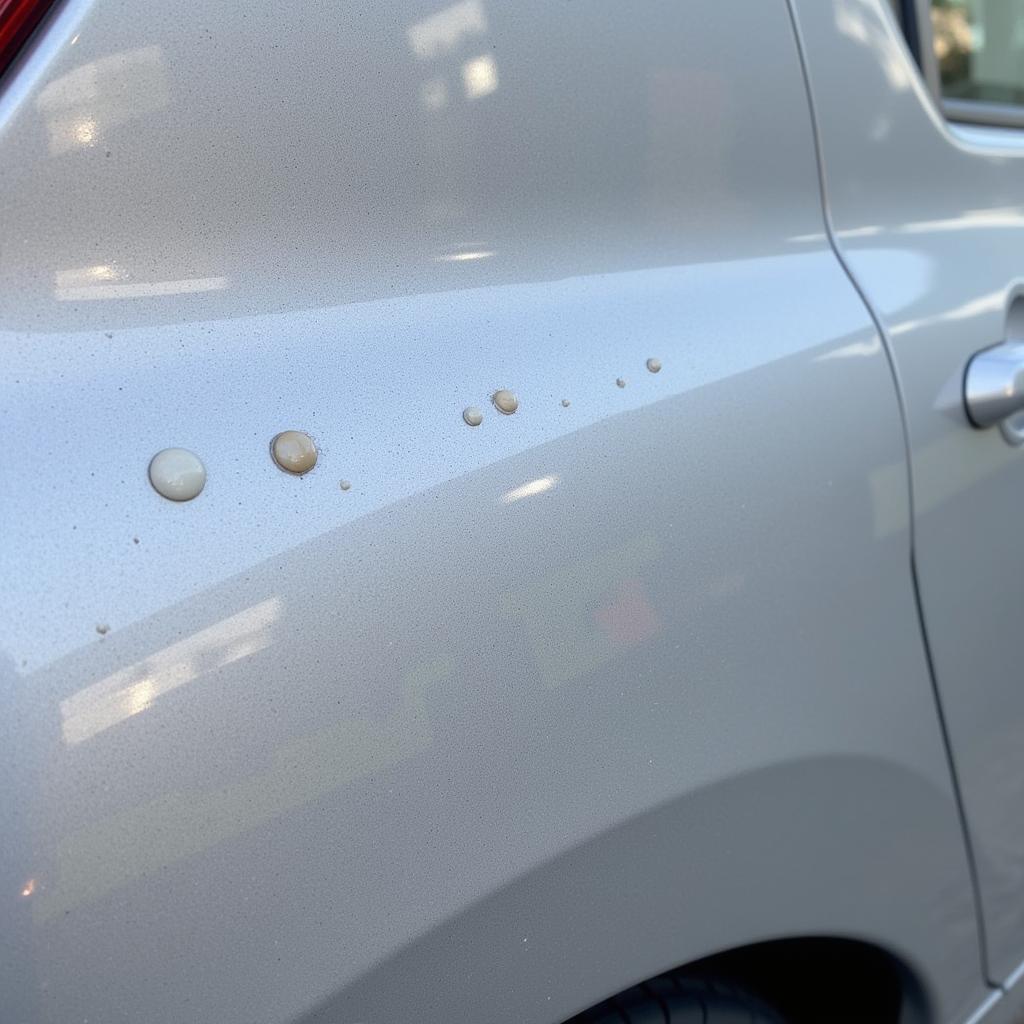Discovering a paint spot on your car can be frustrating, but don’t panic! It’s a common issue, and often, you can tackle it yourself with a bit of guidance. This guide will walk you through identifying the type of paint spot and provide you with effective DIY solutions to restore your car’s finish.
Understanding the Enemy: Different Types of Paint Spots
Before you grab your cleaning supplies, it’s crucial to determine the type of paint spot you’re dealing with. Here are the most common culprits:
- Water Spots: These appear as white, chalky marks caused by mineral deposits in evaporated water.
- Tree Sap: This sticky substance can etch into your car’s paint, leaving behind stubborn, discolored spots.
- Bird Droppings: Highly acidic, bird droppings can quickly damage paint, leaving behind dull, etched marks.
- Paint Transfer: This occurs when another car’s paint rubs onto yours, often from minor parking lot mishaps.
DIY Solutions: How to Repair Those Pesky Paint Spots
Now that you’ve identified the offender, let’s explore some effective DIY solutions:
1. Tackling Water Spots
- Mild Cases: A simple wash with a quality car wash soap and microfiber mitt often does the trick.
- Stubborn Spots: Try a 50/50 mix of white vinegar and distilled water. Apply with a soft cloth, let it sit for a few minutes, then rinse and dry.
Expert Insight: “Never use harsh household cleaners on your car’s paint,” warns Mark Stevenson, Senior Auto Detailer at ProShine Auto. “These can strip away the protective clear coat, leading to more serious damage.”
2. Banishing Tree Sap
- Warm Water and Soap: For fresh sap, try washing the area with warm, soapy water.
- Dedicated Sap Remover: If the sap has hardened, a dedicated automotive sap remover is your best bet. Follow the product instructions carefully.
- Home Remedy (Use with Caution): Soak a cloth in rubbing alcohol and gently rub the affected area. Test on an inconspicuous area first, as alcohol can potentially damage some paint finishes.
3. Neutralizing Bird Droppings
- Act Fast: The key is to remove bird droppings as soon as possible to minimize damage.
- Quick Detailer Spray: Keep a bottle of quick detailer spray and a microfiber cloth in your car for on-the-go removal.
- Baking Soda Paste: For stubborn droppings, make a paste with baking soda and water. Apply to the affected area, let it sit for a few minutes, then rinse and dry.
4. Addressing Paint Transfer
- Clay Bar Treatment: A clay bar kit is designed to remove surface contaminants, including paint transfer. Follow the kit’s instructions carefully.
- Rubbing Compound: For more stubborn cases, a rubbing compound can help to polish away the transferred paint. This requires a bit more skill and patience, so you might want to seek professional help if you’re unsure.
Prevention is Key: Protecting Your Car’s Paint
The best way to deal with paint spots is to prevent them in the first place. Here are some proactive measures:
- Regular Washing: Wash your car regularly (every 1-2 weeks) to remove contaminants before they have a chance to bond with the paint.
- Waxing: Apply a quality car wax every 3-4 months to create a protective barrier.
- Covered Parking: Whenever possible, park your car in a garage or under a carport to shield it from the elements.
Conclusion
Don’t let paint spots dampen your car’s shine. By understanding the different types of spots and following these DIY repair techniques, you can keep your car looking its best. Remember, early detection and treatment are key to minimizing damage. And when in doubt, seeking professional help is always a wise decision.



